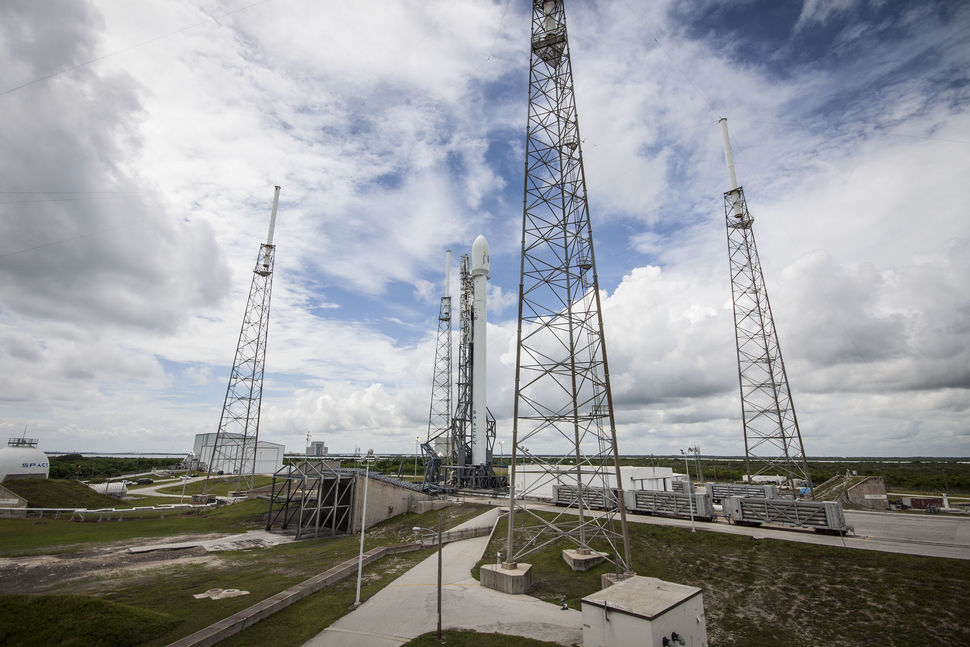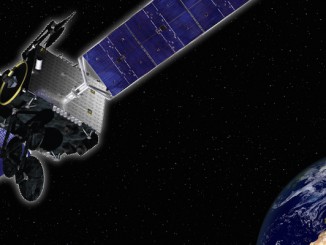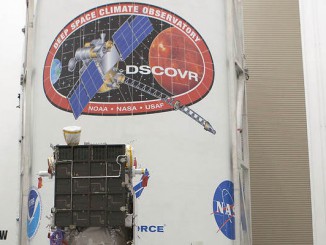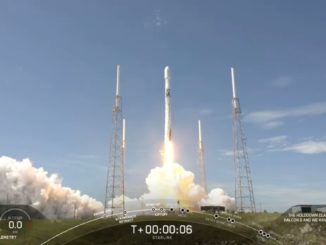
SpaceX’s next launch with a European-built communications satellite has been delayed to no earlier than March 28 to study a problem with a helium pressurization system on the Falcon 9 rocket, officials said Tuesday.
The liftoff was set for Saturday in a one-hour launch window opening at 4:04 p.m. EDT (2004 GMT), and the mission’s communications payload is fueled and ready for flight.
Officials decided to push back the launch at least one week because of an issue with the Falcon 9 rocket, according to officials with Thales Alenia Space, which manufactured the mission’s payload in Cannes, France.
Speaking at a luncheon in Washington, D.C., on Tuesday, SpaceX president and chief operating officer Gwynne Shotwell blamed the delay on the Falcon 9’s high-pressure helium system used to pressurize the rocket’s tanks.
The rocket was scheduled for a countdown dress rehearsal Tuesday that would culminate in a three-second firing of the first stage’s nine Merlin engines.
The Falcon 9 launch will now occur after a United Launch Alliance Delta 4 rocket is due to blast off from Cape Canaveral on March 25 with a fresh U.S. Air Force GPS navigation satellite.
The mission will deliver the TurkmenAlem52E/MonacoSat communications satellite to orbit. Built by Thales, the spacecraft is owned by the government of Turkmenistan and is set to become the country’s first satellite.
The launch will mark the Falcon 9 rocket’s fourth flight of the year after launches Jan. 10, Feb. 11 and March 1 with supplies for the International Space Station, a NOAA space weather observatory, and two communications platforms for Eutelsat and Asia Broadcast Satellite.
Before the delay to the launch this month, SpaceX planned to conduct an abort test of the company’s next-generation Crew Dragon space taxi some time in early April. Another Falcon 9 rocket was set for liftoff no sooner than April 10 with a Dragon supply ship for the space station.
It was not clear Tuesday if other upcoming launches would need to be rescheduled in a ripple effect from the delay in the TurkmenAlem52E/MonacoSat flight from March 21 to March 28.
When the mission blasts off, the two-stage Falcon 9 rocket will deploy the Thales-built spacecraft into an arcing transfer orbit with a high point thousands of miles above Earth. The distant orbit, coupled with the satellite’s heavy weight, will keep the launcher from performing an experimental flyback maneuver to test out a concept SpaceX hopes will eventually lead to the booster’s reusability.
The next chance to try the reusability experiment will come in April with the launch of SpaceX’s next cargo delivery flight to the International Space Station.
With a launch weight of about 4,500 kilograms — 9,920 pounds — the satellite is based on the Spacebus 4000 C2 spacecraft bus built by Thales Alenia Space. It is designed for a 15-year service life.
“Once operational in orbit, TurkmenAlem52E/MonacoSat will allow Turkmenistan to operate its first national satellite telecommunications system, ensuring enhanced, secure telecommunications for the country,” Thales wrote in a mission summary posted on the company’s website.
Follow Stephen Clark on Twitter: @StephenClark1.



